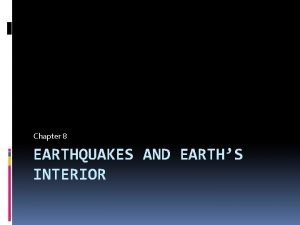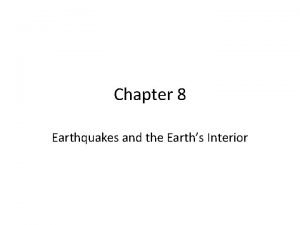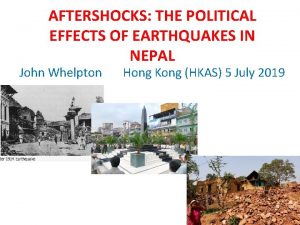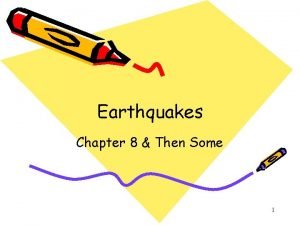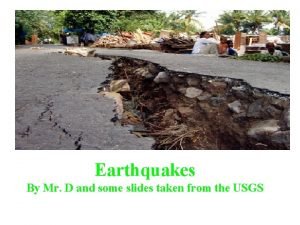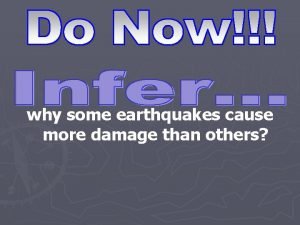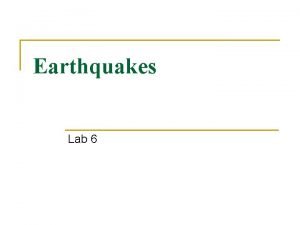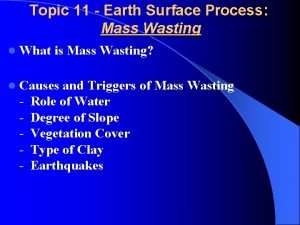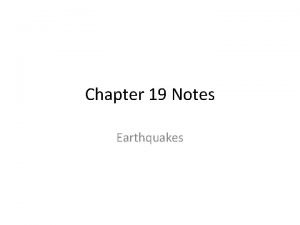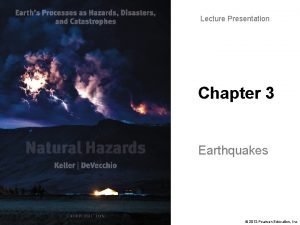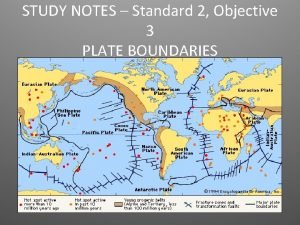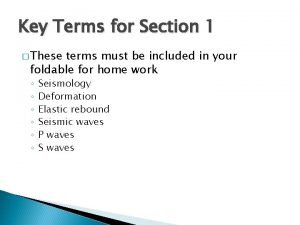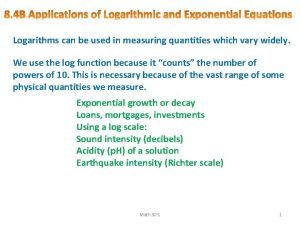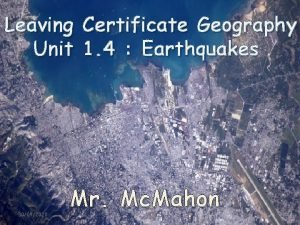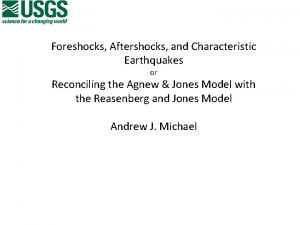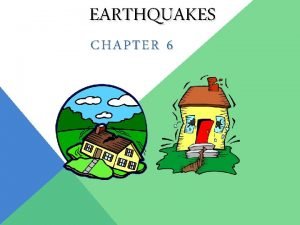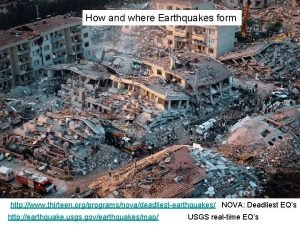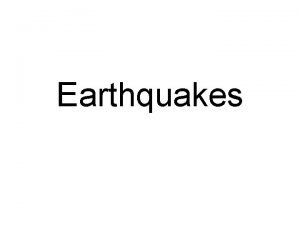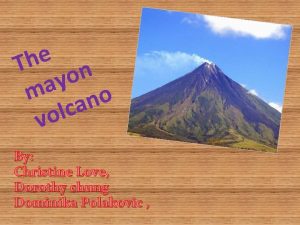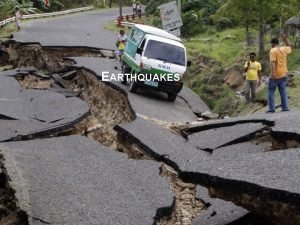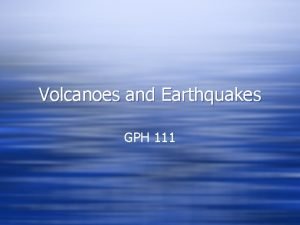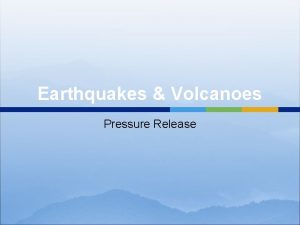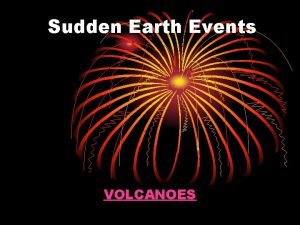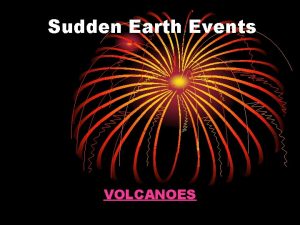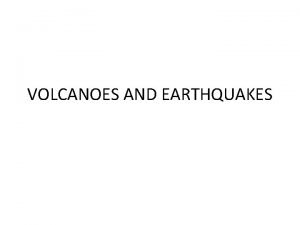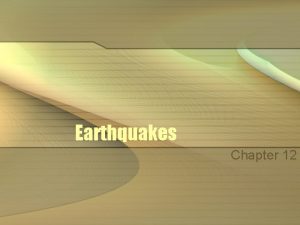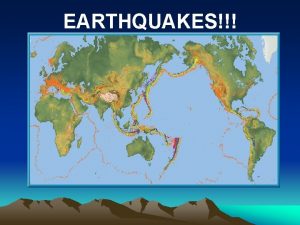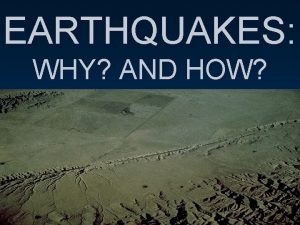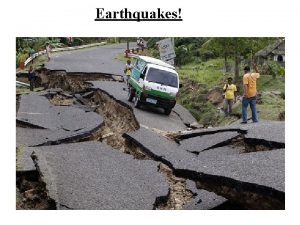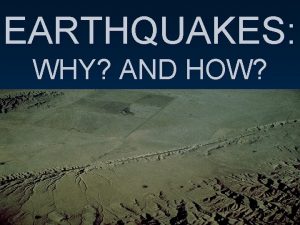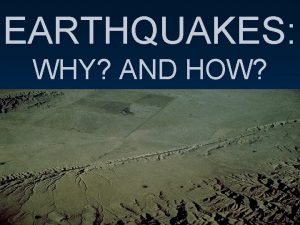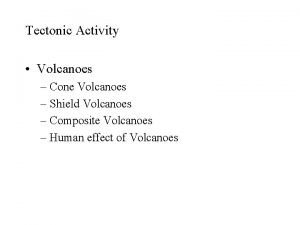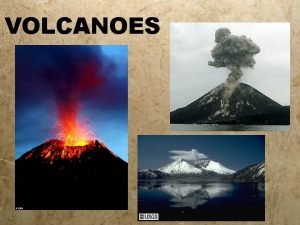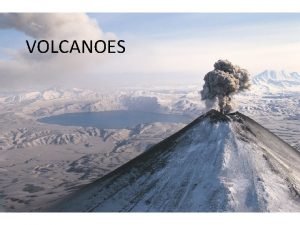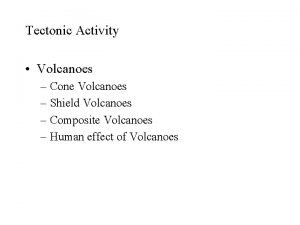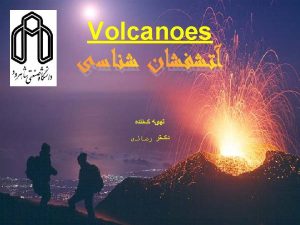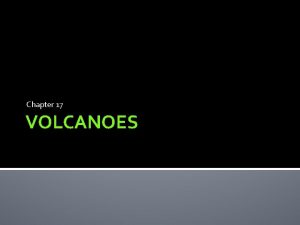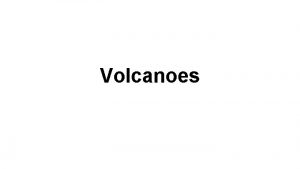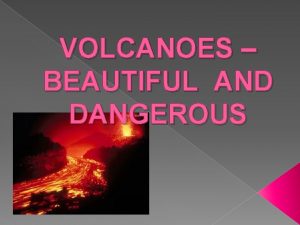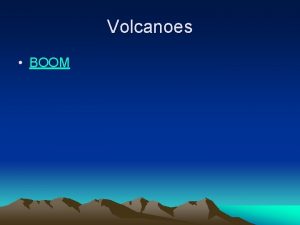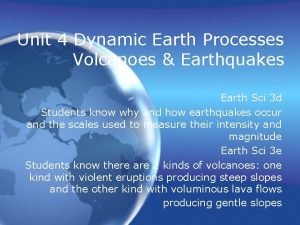1 2 Sudden Earth Events earthquakes or volcanoes




























- Slides: 28

1. 2 Sudden Earth Events (earthquakes or volcanoes)

Earthquakes 1. 2. 3. 4. Trembling or vibrations of the ground, caused by the sudden release of energy that has slowly been building up in Earth’s crust. Large masses of rock in the crust move and sometimes become locked together or stuck. A tremendous force is created until finally the rocks break. This sudden break causes an earthquake.


There are 3 types of seismic waves that occur in an earthquake. n 1) Primary (P-waves) – these are the fastest of the 3 waves and arrive first on Earth’s surface to warn people in earthquake areas. n

2) Secondary (S-waves) – travel more slowly than P-waves and can pass only through solids, not liquids or gases. n 3) Surface Waves – are the slowest, but their rolling motion breaks up roads and buildings, so they do the most damage. n



Focus – first place that the rock breaks below the surface in an earthquake n Seismic Waves – shock waves caused by an earthquake. n Epicentre – point on the surface directly above the focus n


When P & S-waves reach the epicenter they generate the surface waves which travel outward like water ripples from a stone being tossed into water. n Example n

Water displaced by an earthquake is called a tsunamis (huge waves). n Liquefaction is the process of changing into a liquid-like substance such as quicksand. The sandy base is turned into quicksand, and many buildings fall over. n

n Richter Scale – scale developed by Charles Richter that measures the magnitude of an earthquake. Scale starts at 0, and each increase of 1 means an increase of 10 times the amount of ground motion.

n n n Generally earthquakes of 2 or less are not felt. Magnitudes of 5. 0 -5. 9 create damaging shocks. 6. 0 -6. 9 are destructive in populated regions. Approximately 18 earthquakes per year are considered major: 7. 0 – 7. 9. Magnitudes higher than 8. 0 produce total destruction to communities.


Volcano – an opening in Earth’s crust through which solid and molten rock, ash, and gases escape. n Pg 360 – diagram of a volcano n


When volcanoes are not active they are described as dormant. n Ring of fire is an area of volcanoes around the Pacific ocean n


Lava – molten rock that flows out of a volcano. n Ash – fine, burnt particles from a volcanic eruption. n Magma – molten rock inside Earth. n


Seismograph – device that detects the waves of energy that spread through the earth from the focus of an earthquake. n Surveyor’s Level – device that measure minute changes in the angle of the ground’s slope. n Seismogram – print out of seismograph n

n The earliest seismograph was invented in China A. D. 136 by a man named Choko.

Historic Canadian Earthquakes





Volcanoes n Oh My God n seismic seconds n
 Chapter 8 earthquakes and volcanoes
Chapter 8 earthquakes and volcanoes Chapter 8 earthquakes and earth's interior
Chapter 8 earthquakes and earth's interior In what section of earth do earthquakes happen?
In what section of earth do earthquakes happen? A large crack in the earth formed by a river or earthquakes
A large crack in the earth formed by a river or earthquakes Chapter 8 earthquakes and earth's interior
Chapter 8 earthquakes and earth's interior Mutually exclusive events vs not mutually exclusive events
Mutually exclusive events vs not mutually exclusive events Earthquakes
Earthquakes Chapter 8 quiz 1
Chapter 8 quiz 1 Types of earthquake
Types of earthquake Chapter 8 section 3 earthquakes and society answer key
Chapter 8 section 3 earthquakes and society answer key Do earthquakes happen
Do earthquakes happen Why some earthquakes cause more damage than others
Why some earthquakes cause more damage than others Diastrophic forces
Diastrophic forces Examples of mass movement
Examples of mass movement Chapter 19 earthquakes
Chapter 19 earthquakes Define natural disasters
Define natural disasters 5 effects of earthquakes
5 effects of earthquakes Frequent earthquakes in an area may indicate *
Frequent earthquakes in an area may indicate * Causes of earthquake in points
Causes of earthquake in points Elastic rebound
Elastic rebound Http://earthquake.usgs.gov/earthquakes/map/
Http://earthquake.usgs.gov/earthquakes/map/ Earthquake damage scale
Earthquake damage scale Earthquakes
Earthquakes Btn earthquakes
Btn earthquakes Liquefaction occurs when seismic waves cause __________.
Liquefaction occurs when seismic waves cause __________. Why do earthquakes occur
Why do earthquakes occur Chapter 19 earthquakes
Chapter 19 earthquakes Where do earthquakes occur? *
Where do earthquakes occur? * Differentiate active and inactive volcanoes
Differentiate active and inactive volcanoes

